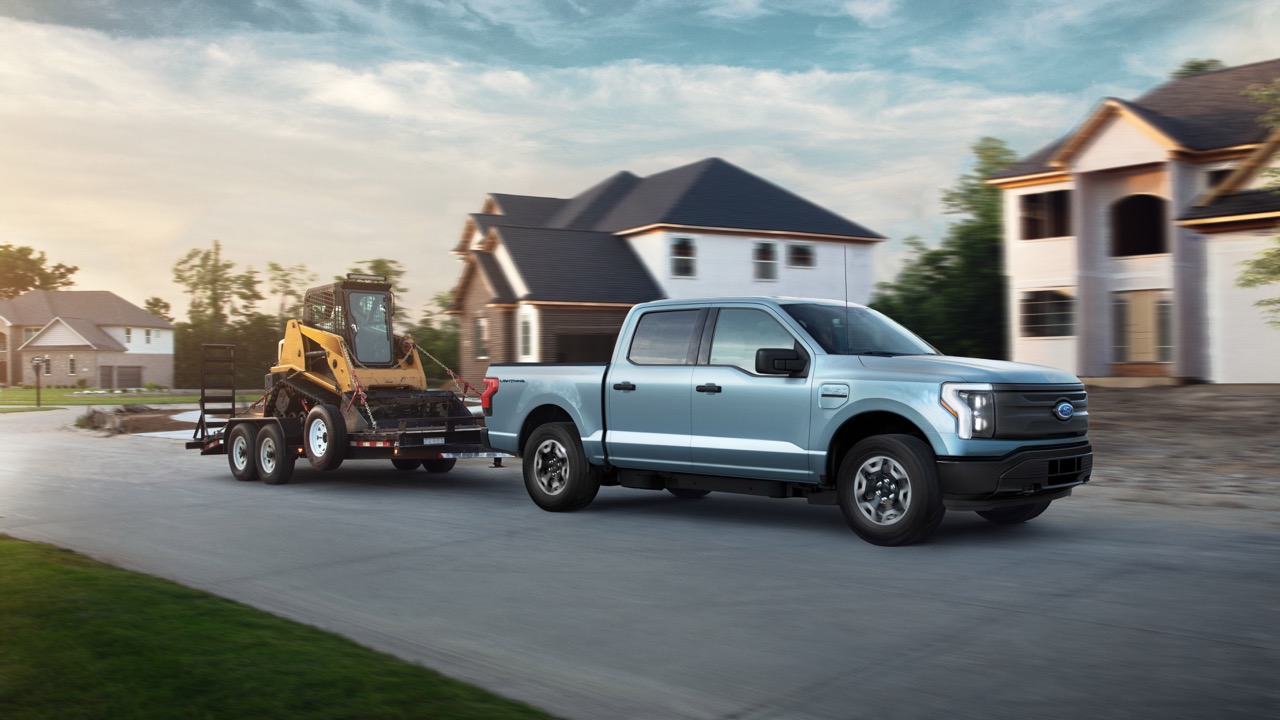Understanding Range Impact: Hauling & Towing
Just like gas-powered vehicles, the heavier the load or pull, the more energy needed to move it. When compared against trailers with larger frontal areas, our testing shows that trailers with lower frontal areas have better aerodynamics and a less negative impact on range capacity. Use the charts below to compare how your daily needs could be impacted.
Ford Lightning Towing Impact Estimates on Range
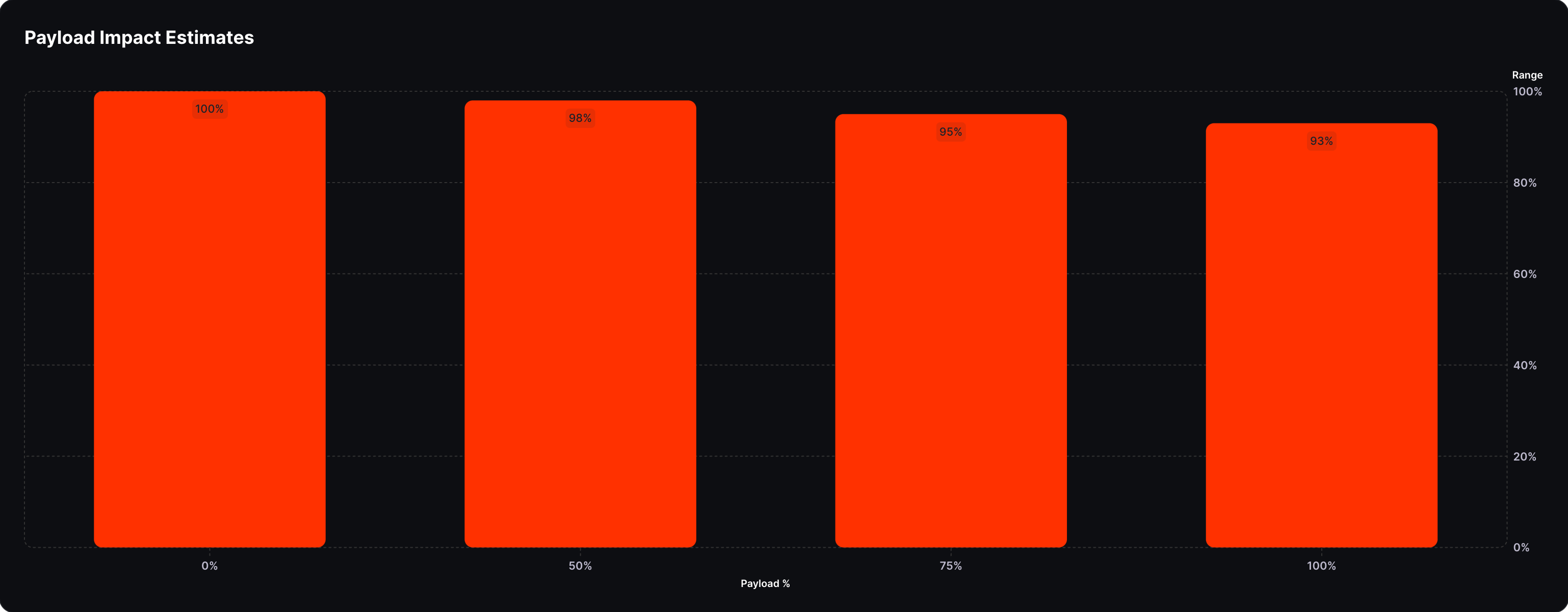
📉 The range of payload impact estimates shows a negative trend, hinting less efficiency with increasing payload. Perhaps the aircraft performance is affected by heavier loads.
💯 At 0% payload, we have a full range of 100%, which is the maximum range indicated in the statistical summary.
📊 As payload increases to 100%, the range drops to a minimum of 93%. This indicates a decrease in range by 7 percent units due to total payload.
Ford Lightning Trailer Impact Estimates on Range
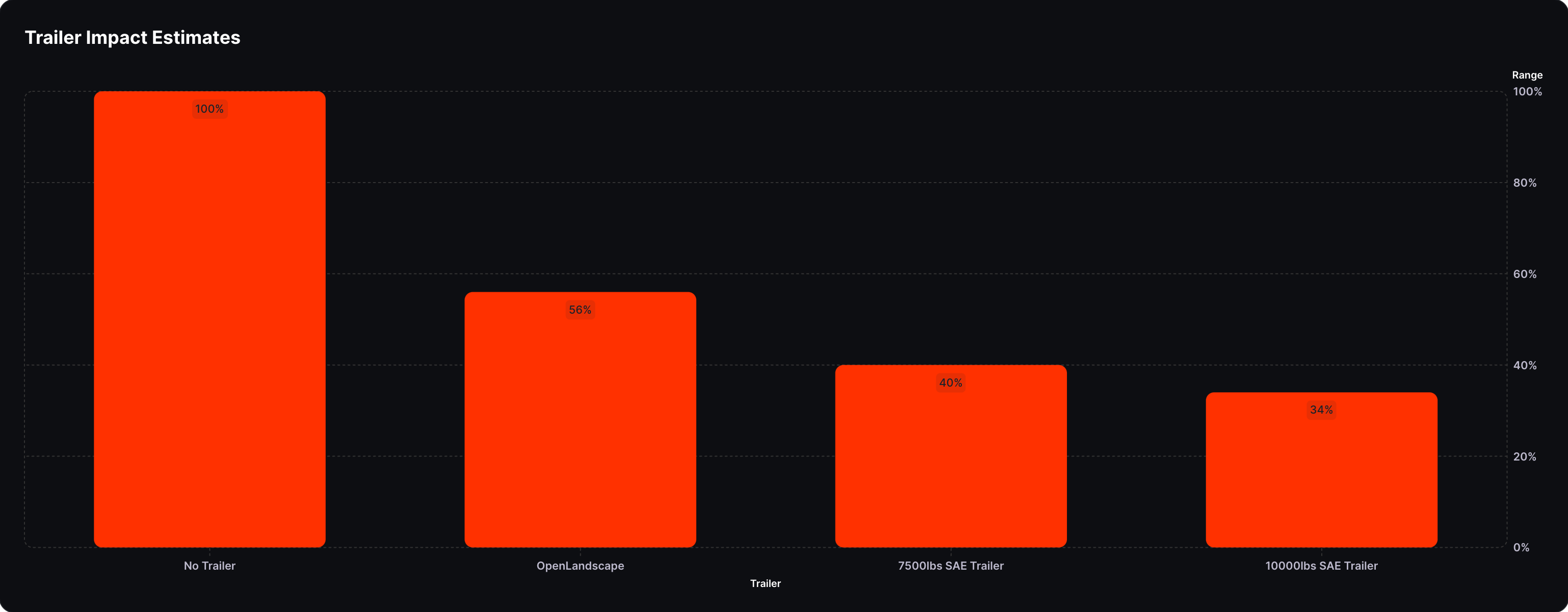
📉 The trailer with the least impact on range is the 'No Trailer' with 100%, suggesting that driving without towing a trailer is the most energy-efficient option.
🌳 The 'Open Landscape' trailer impacts the vehicle's range by reducing it to 56%, indicating that less weight allows for more range.
🚛 The heavy '10000lbs SAE Trailer' significantly drops the range to 34%. It reveals that towing a heavier load significantly limits the vehicle's efficiency.
Understanding Range Impact: Extreme Weather Conditions
All vehicles face challenges in extreme temperatures, whether hot or cold. Cabin climate control systems, window defrosters and rolling resistance from snow and slush all put additional demand on batteries. These demands are greatest when the battery is cold. Unlike a gas-powered vehicle, which uses heat from the engine, electric vehicles use battery power to heat the cabin.
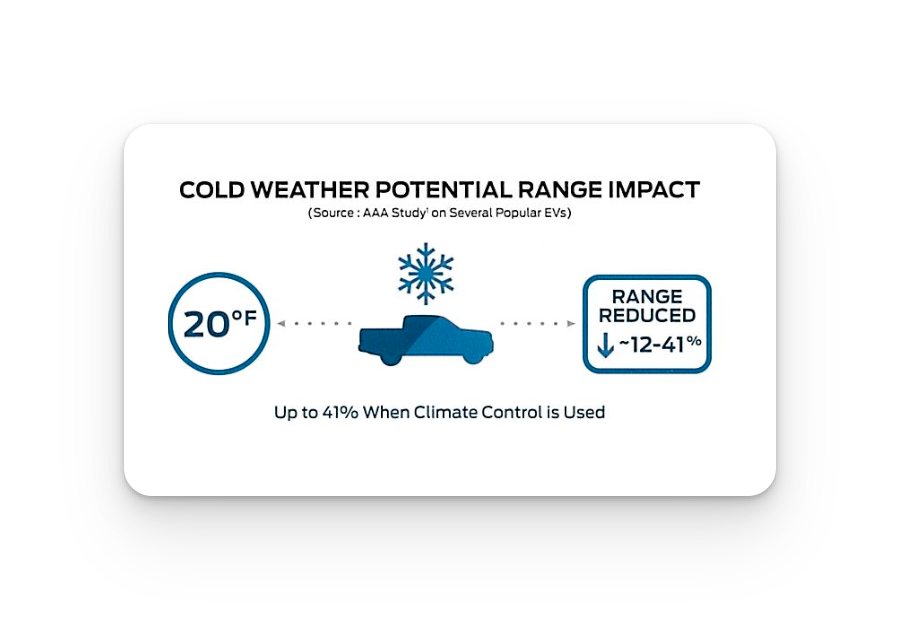
Cold Weather and Its Impact on F-150 Lightning Range
When it comes to the F-150 Lightning and its range, cold weather can have an impact. Just like any electric vehicle, extreme temperatures can affect the battery performance. In colder climates, the battery may not be as efficient, resulting in a slightly reduced range.
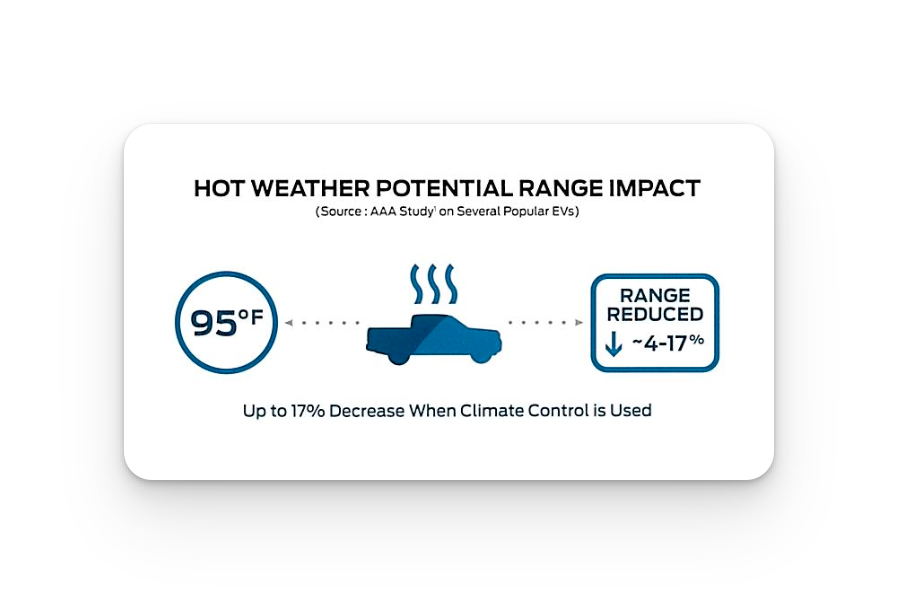
Hot Weather and Its Impact on F-150 Lightning Range
When it comes to the F-150 Lightning range, understanding the impact of hot weather is crucial. As temperatures rise, it's important to consider how it can affect the performance and distance covered by this impressive electric vehicle.
Maximizing EV Range with Ford Pro™ Solutions
While extreme weather can reduce range, Ford Pro offers solutions that can help you mitigate the impact. Here's how you can use Ford Pro E-Telematics' software and EV best practices to consistently get the best performance out of your truck.
Cold Weather Tips
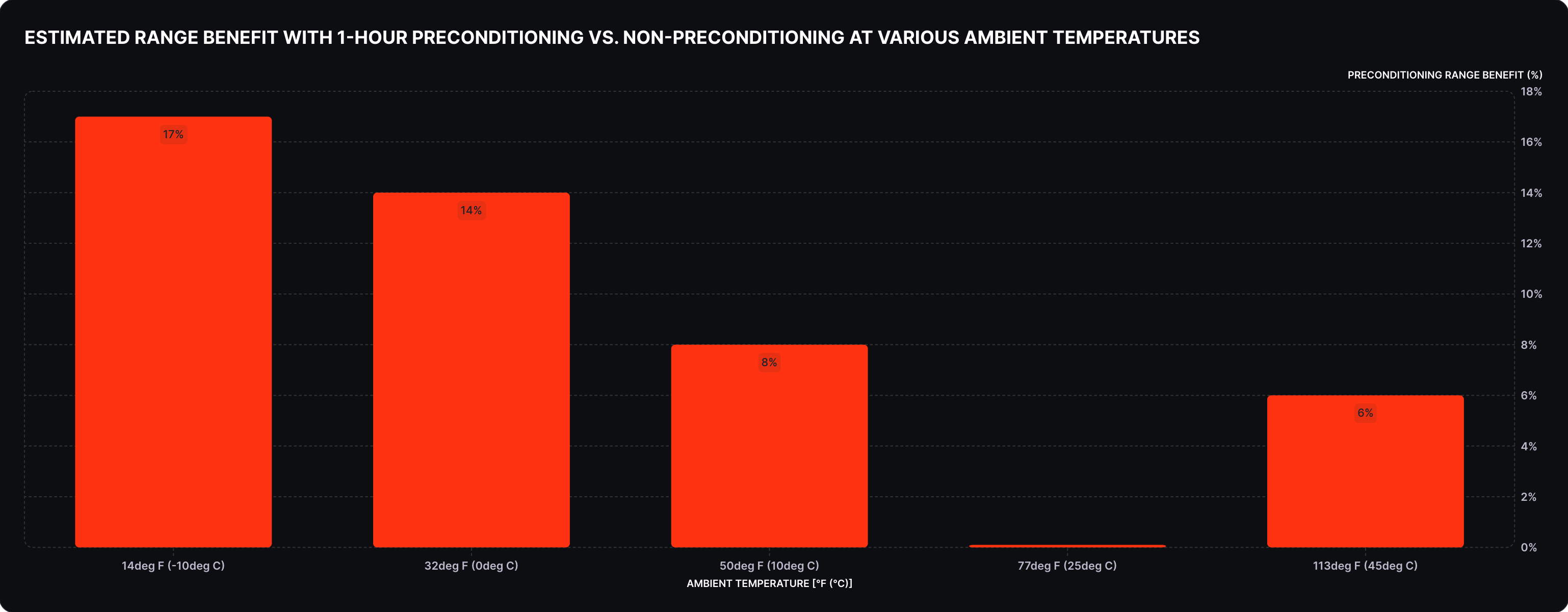
🌡️ The higher the ambient temperature, the lesser the preconditioning range benefit, with the lowest being only 0.1% at 77°F. It suggests electric cars suffer range loss at high ambient temperatures.
🥶 The highest preconditioning range benefit is experienced at the coldest temperature examined, 14°F, where it stands at 17%. This might be due to warming up battery enhancing its efficiency.
😀 Overall, preconditioning seems to offer an average range benefit of 9%, providing a significant boost in colder climates. For day-to-day usage, it could result in notable improvements.
Pre-condition Your Vehicle: Schedule departure times using the E-Telematics software. This feature warms up the battery beforehand, optimizing range and warming the cabin.
Keep Plugged In: When parked, leave your vehicle plugged in. It uses power from the charger to heat both the battery and cabin, minimizing energy drain from the battery.
Indoor Parking: If possible, park in indoor facilities. The warmer environment helps mitigate the effects of cold on your vehicle.
Snow Management: Use remote start or schedule preconditioning to melt snow. Remember to brush off any remaining snow to reduce weight and drag.
Heated Seats Over Cabin Heating: Utilize the F-150 Lightning's heated seats for warmth instead of heating the entire cabin.
Understanding Range Impact: Tips on Driving Style & Road Conditions
The efficiency of an electric vehicle (EV) is significantly influenced by the driver's style and the road conditions. When it comes to driving style, the rate of acceleration and cruising speed are critical. It's advisable to maintain moderate speeds, as higher speeds invariably lead to increased energy consumption. Utilizing the "Normal" drive mode, coupled with One-Pedal Driving Mode, enhances the regenerative braking capability. This mode is especially beneficial as it aids in recovering more energy back to the battery, making the most of every journey. Moreover, drivers should avoid aggressive acceleration and braking, which not only consume more energy but also put additional wear on the vehicle.
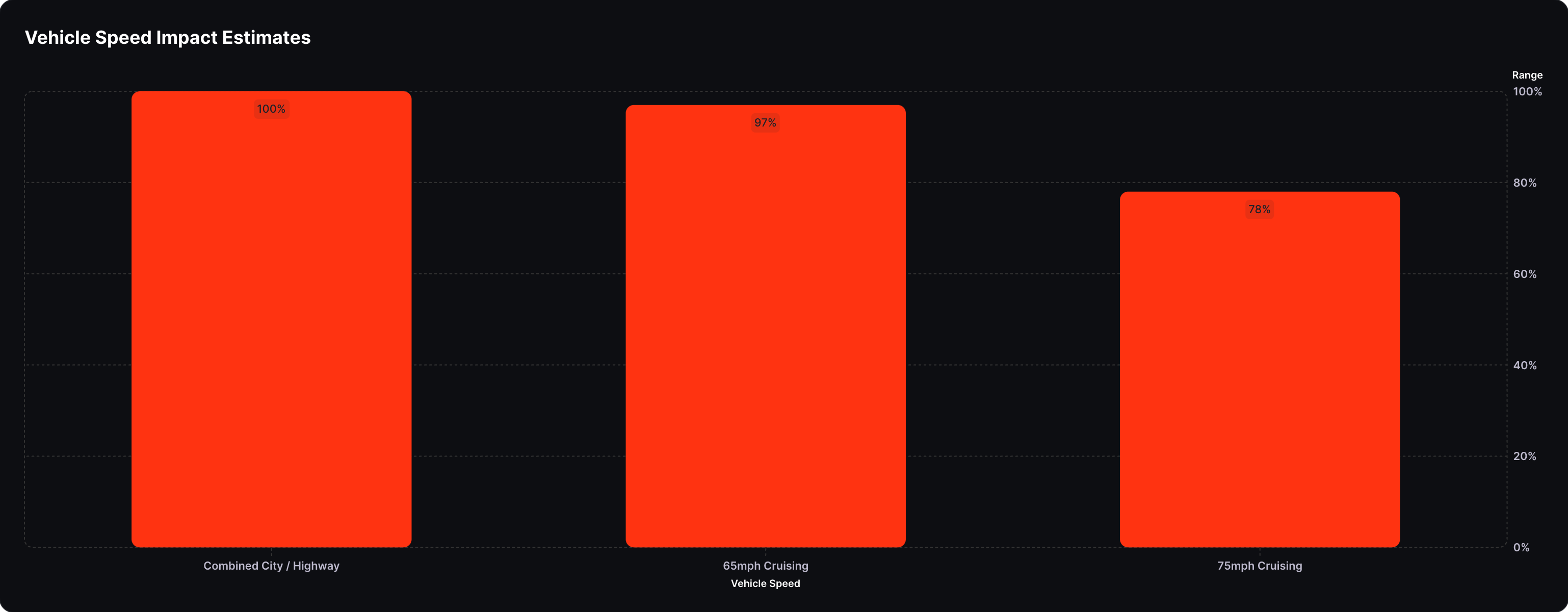
🏎️ The maximum range of our vehicle is achieved at combined city and highway speeds (100% range).
* Seems like our vehicle performs best in mixed driving situations.
🛣️ At cruising speeds of 75mph our vehicle's range falls to its minimum, 78%.
* Perhaps high speeds makes it harder for the vehicle to optimise fuel efficiency.
✔️ Only a 3% decrease in range is seen when cruising at 65mph compared to combined driving.
* The vehicle seems to maintain good range at this moderate speed.
Road conditions are another vital aspect that affects an EV's range. Factors like wind and precipitation can play a role in how much energy the vehicle uses. To optimize efficiency, it's essential to ensure the tires are inflated to the recommended pressure. Over or under-inflated tires can lead to increased rolling resistance, thereby reducing the vehicle's range. Furthermore, it's crucial to avoid overloading the vehicle. Carrying excess weight demands more power from the battery, thus reducing the overall range. By paying attention to these aspects, drivers can significantly enhance their EV's performance and range, ensuring a more energy-efficient and cost-effective driving experience.
How Pre-Conditioning and Payload Affect Range
Ford's focus on the real-world implications of temperature and payload on the E-Transit's driving range is crucial, especially for commercial vehicle operators. Here's a breakdown of how these factors impact the vehicle's performance:
Impact of Preconditioning
Preconditioning is a vital feature for optimizing battery range, particularly in colder climates. Here’s how it works:
- Function: When the ambient temperature is below 50°F (10°C), preconditioning heats the battery system to a target of 59°F (15°C) by the scheduled departure time.
- Benefit: This process ensures the battery is at an optimal temperature for efficient energy use, thereby enhancing the driving range.
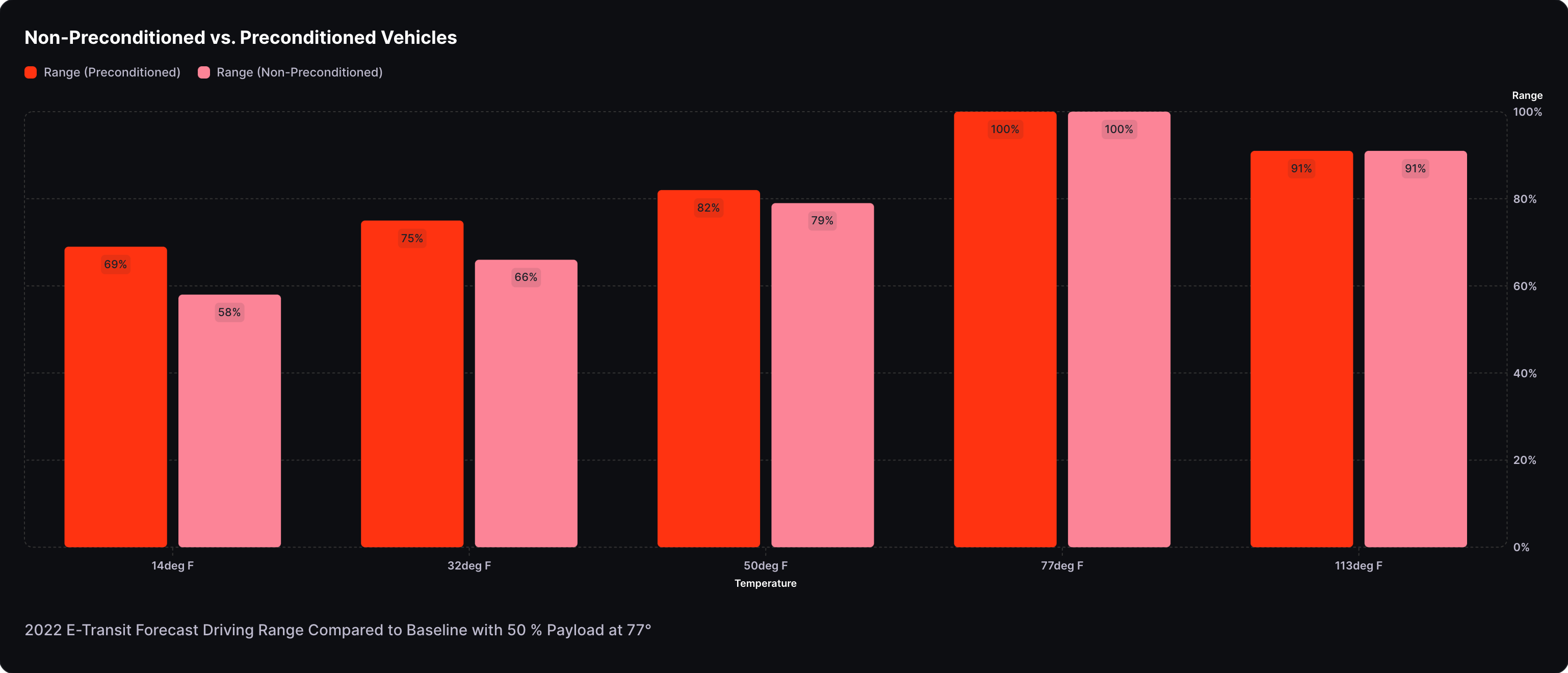
🚗 Preconditioned vehicles consistently outperform non-preconditioned ones across all temperature ranges, suggesting better battery efficiency.
❄️ The greatest range disparity (17%) between preconditioned and non-preconditioned vehicles occurs at temperatures of 14°F.
☀️ Both vehicle types achieve maximum range at 77°F, implying optimal performance at moderate temperatures.
Impact of Payload and Temperature on Driving Range
Ambient Temperature: Driving range varies significantly with different ambient temperatures, especially when compared to a baseline performance achieved at 77°F (25°C).
Payload Effect: The impact of payload is also notable. Testing at 50% payload serves as a reference point, with variations in payload affecting the range.
Real-World Testing: Ford conducted tests using temperature-controlled dynamometers and engineering simulations to estimate the effects of temperature and payload on the E-Transit.
Mileage Variation: While actual mileage may vary based on several factors, these tests provide approximate indications for what E-Transit operators can expect in terms of range.
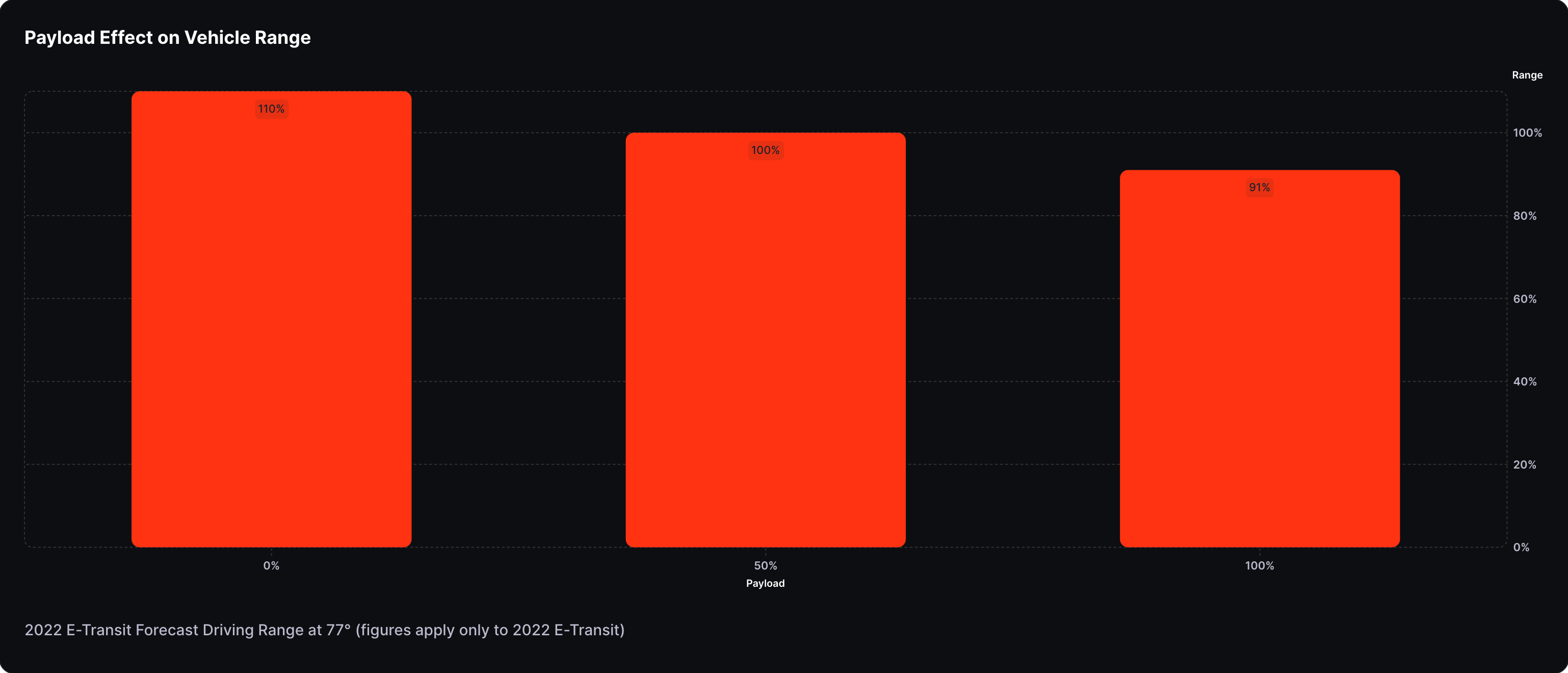
⬇️ As payload increases, vehicle range decreases from a maximum of 110% to a minimum of 91%. This could be due to the added weight hindering performance.
📊 Range variability is within 19%, with the minimum and maximum ranges differing significantly. This might suggest some designs perform better under payload pressure.


